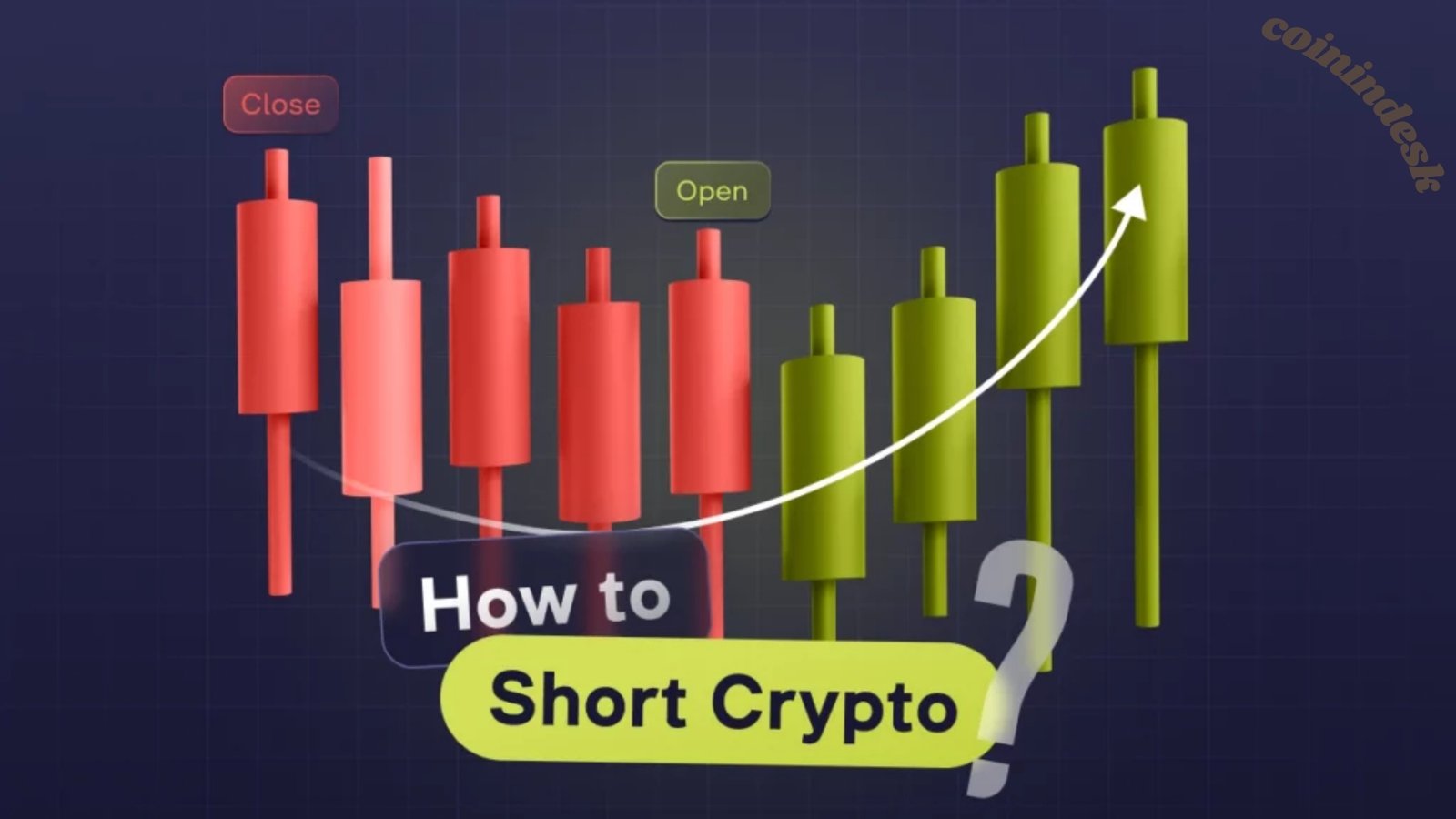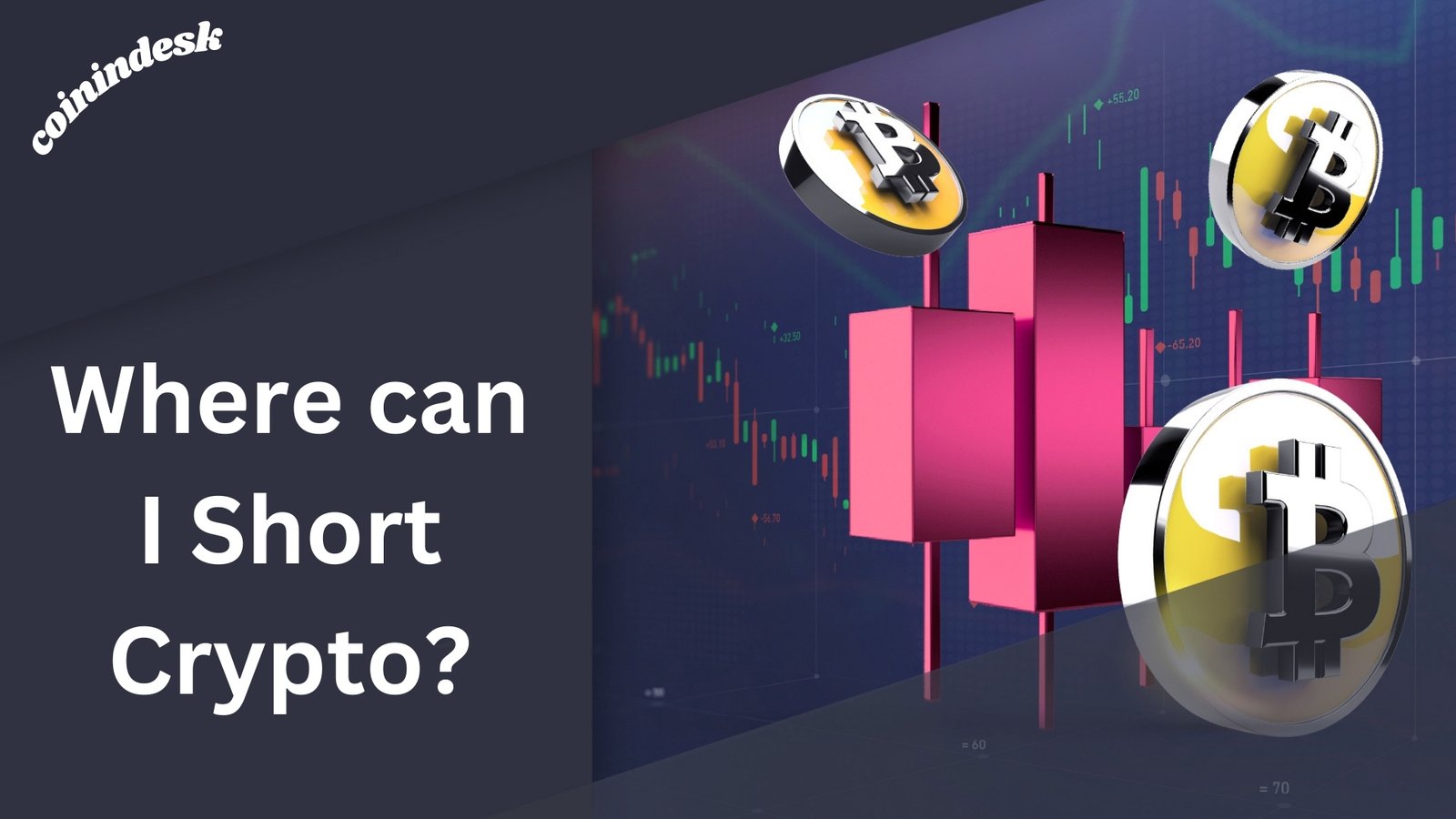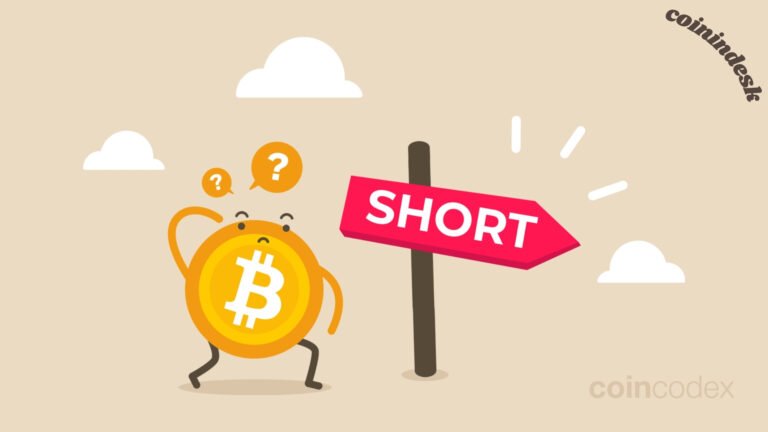Shorting Bitcoin: People in the trading industry often use the term “shorting Bitcoin” to indicate that they are predicting a decline in the price of Bitcoin. Where the ordinary individual gets involved and how traders can profit from a decline in asset value are less apparent. Learn the ins and outs of shorting and how it relates to the Bitcoin market with this helpful tutorial.
How Does Shorting Crypto Work?
The underlying idea behind shorting is to profit from an asset’s decline in value. This may sound backward, but there are multiple approaches; we’ll go over the most popular ones. While most people think of margin trading when they hear “shorting,” investors can accomplish the same through prediction markets and futures. Now, we will examine each of these.
Popular Ways to Short Crypto

Margin Trading
Borrowing funds from an exchange to establish a position is known as margin trading. You can short an asset or trade at a leveraged level. The basic idea is to borrow some commodity from an exchange and then return it later. During your possession of the asset, you are granted complete freedom to use it as you like, subject only to its return by the specified deadline.
How this can make a trader money is simple
For the sake of argument, let’s say Jim thinks Bitcoin’s value will soon fall. To counter this, he goes to an exchange and borrows 5 Bitcoins (or any amount you like) to sell, returning the same amount in a month. If Jim’s forecast comes true, he plans to repurchase the 5 BTC later this month for less than he originally sold them for. After returning the borrowed Bitcoin to the exchange, Jim retains the benefit from the price difference.
While this is great if Jim is correct, it can get pretty troublesome if he is wrong
Without leverage, the highest risk in ordinary trading is the initial investment when buying low and selling high. If you invest in Bitcoin and its value falls by half, you may ride it out until it recovers again and avoid losing money. On the other hand, there is a deadline for returning borrowed assets in short selling. If the value of Bitcoin grows by 50% while you’re shorting it, you’ll lose money since you’ll have to purchase it back at a higher price. Losses may accrue without the preservation of assets using this strategy, in contrast to conventional trading.
Futures
Trading futures contracts is another common strategy for selling an asset short. Futures are contracts to purchase or sell an item at a predetermined price and on a specified date. While the specifics differ, this can function similarly to margin trading in many respects.
Reiterate that Jim believes BTC will decline in this situation. Jim can sell his Bitcoin in one month at today’s price by entering into a futures contract. He will still be able to sell at the agreed-upon price even if Jim is right and Bitcoin’s value drops. Again, Jim risks missing out on even bigger rewards if he’s mistaken.
Futures can be traded like assets. Their value depends on the contract, market, and expiration date. Even if he feels Bitcoin will tank, Jim may lock in his profit by buying a contract that delivers BTC at current rates and selling it to another investor before the contract expires. So long as they don’t own the contracts when they expire, investors can profit from their worth in the future without being bound to fulfill them.
Futures provide some relief from the high-stakes dangers of margin trading. The following extreme case illustrates the point.
No matter how high Bitcoin’s price climbs, Jim will still be liable for repaying the BTC he borrowed in a margin trade if its value skyrocketed—for example, by 200% growth—when Jim had predicted a decline. For some people, this can spell financial disaster. However, with a futures contract, Jim could have sold his Bitcoin at the agreed-upon price without missing out on huge gains.
Prediction markets
Gambling on the results of events is essentially what a prediction market is all about. Users can speculate on upcoming events, such as political elections or market moves, by taking “long” or “short” positions. There are currently numerous marketplaces based on blockchains like Ethereum’s, and betting on the price swings of cryptocurrencies is a regular practice so that it could be nearly anything. Shorting an asset’s price (Bitcoin or any asset) is as simple as betting on its decline in value. Even if these markets aren’t for the faint of heart, they reveal a lot about the public’s true feelings about upcoming events—after all, people won’t wager on something they don’t truly believe in.
One drawback is that prediction markets powered by cryptocurrencies are still in their early stages. Starting a new pool does not ensure that there will be takers, and the number of pools that can be hosted at any given moment may be restricted.
As with futures, this shorting reduces exposure to the almost limitless risk associated with margin trading, which is a benefit. It is important to have a well-defined agreement regarding the consequences if the wager does not go as planned. This also paves the way for many new possibilities for wagering on the potential decline in Bitcoin value over extended periods.
Where can I Short Cryptocurrency?

Kraken
Traders of all skill levels can find what they need with Kraken’s extensive services, which are made possible by blockchain technology. The platform maintains a reputation for offering a wide range of cryptocurrencies at low fees, especially in its Kraken Pro service. It is well regarded for its ability to combine user-friendliness with advanced trading capabilities in the realm of blockchain and cryptocurrencies.
Pros:
- Caters to both beginners and advanced traders
- Offers over 230 cryptocurrencies and 130+ trading pairs
- Low fees on Kraken Pro-service
- 24-hour live phone and chat support
Cons:
- Limited funding options for U.S. customers
Bitfinex
As of 2024, Bitfinex has grown into a world-renowned cryptocurrency exchange renowned for its wide crypto support and low costs. Its extensive features and sophisticated trading tools make it suitable for many users.
Pros:
- Offers low trading fees
- Provides staking and lending options for passive income generation
- Allows margin trading and caters to advanced traders
Cons:
- A steep learning curve for new users
Poloniex
With its low trading costs and a wide variety of supported cryptocurrencies, Shorting Bitcoin: Poloniex is a top choice among cryptocurrency exchanges. One effective and flexible platform for exchanging digital assets is Poloniex.
Pros:
- Advanced trading features like stop loss, take profit, and auto-deposit margin for leveraged positions.
- Enables withdrawal of crypto holdings to an external wallet or funding of an account with crypto from an external wallet
Cons:
- It does not support selling crypto on the platform or withdrawing fiat currency and lacks fiat currency trading pairs
Binance
Thanks to its extensive library of digital assets, cutting-edge trading tools, and ample liquidity, Binance has quickly become the top cryptocurrency exchange in the world.
Pros
- Offers a wide selection of cryptocurrencies for trading with relatively low trading fees
- We are known for high liquidity, ensuring easy trading with minimal price slippage.
- The platform caters to beginners and experienced traders with user-friendly and advanced trading options.
Cons
- Regulatory scrutiny in various countries
Considerations for Shorting Crypto on an Exchange
Users should be aware that to open a margin account on any of these platforms, they must pass multiple Know Your Customer (KYC) checks. Additionally, requiring collateral funding before engaging in multiplier trading or shorting assets is a common practice. The required amount can differ depending on the exchange and the position size you intend to place.
A minimum of one-fifth to one-third of your target trade value is usually required. For instance, if you wish to trade $3,000 worth of Bitcoin, most exchanges would require you to have $1,000 in your margin wallet before they can lend you the money.
Where can I Trade Futures?
There are several choices here as well. Kraken is still the greatest option for users in the United States, and Bitfinex and Binance are also among the top offers. Crypto futures trading is currently mostly unregulated in many regions, so users should be mindful that local regulations may change at times without much warning. This is an inherent risk of the practice for the time being.
Customers worried about these things have options from the institutional sector that they can use to their advantage. While Bakkt and CME Group provide Bitcoin futures products, many retail investors would be put off by the relatively high minimum deposit required to create a trading account with one of these institutions. However, there shouldn’t be any regulatory surprises in the future because these venues are sourced from government-approved and regulated companies, making them significantly safer.


